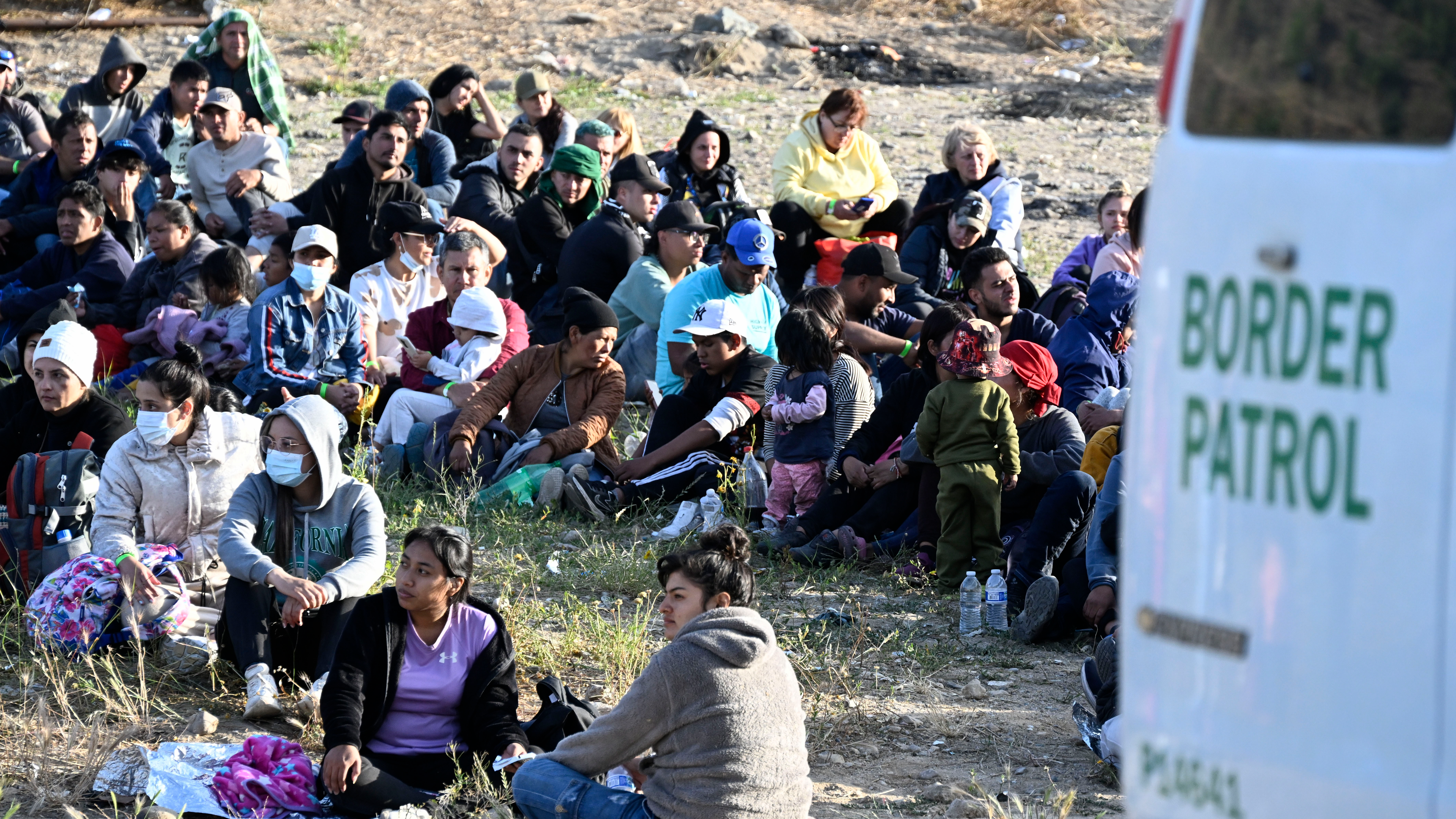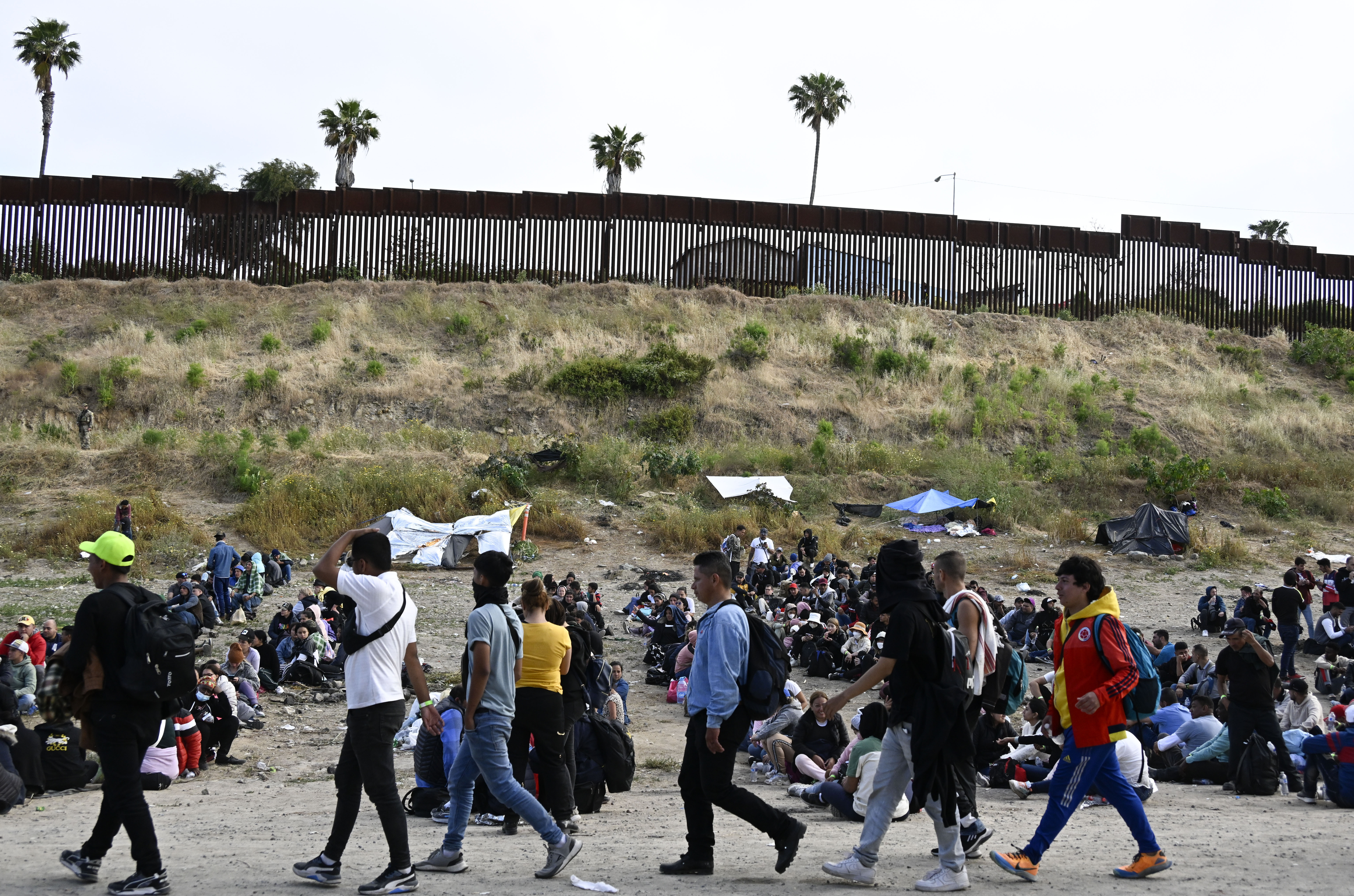
Asylum seekers wait between the double fence on U.S. soil along the U.S.-Mexico border in San Diego, May 8, 2023. /AP
Asylum seekers wait between the double fence on U.S. soil along the U.S.-Mexico border in San Diego, May 8, 2023. /AP
Editor's note: William Jones is a former White House correspondent for Executive Intelligence Review and a non-resident fellow of the Chongyang Institute for Financial Studies, Renmin University of China. The article reflects the author's opinions, and not necessarily those of CGTN.
As May 11 draws to a close, a Trump-era measure which limited immigration to the United States, ostensibly because of the COVID-19 outbreak, and known as Title 42, will expire, and immigrants will then be free to enter the United States and seek asylum.
Already tens of thousands are lining up at the U.S.-Mexico border, or even making their way into the country surreptitiously in anticipation of the law change. The question remains: Is a deeply divided America prepared to deal with a major surge in immigrants?
The U.S. has always prided itself on being a "nation of immigrants," and over time – and often with great effort and struggle – has by and large succeeded in assimilating immigrants from many different nations. With the onset of major economic difficulties worldwide and as a result of U.S.-led wars in the Middle East and Afghanistan, the number of immigrants seeking asylum in the countries of the West, including the U.S., has increased exponentially.
In addition, the failure of the Western liberal economic system to support development policies in the countries of Latin and Central America has thrown many of these into economic – and sometimes political – chaos, leading to a greater inflow of refugees eager immigrate to America.
In 2020, former U.S. President Donald Trump used the growing concern of many Americans over the increased flow of immigrants to the United States through Mexico to help win the presidency. During the COVID-19 pandemic, Trump used the fear of increased contagion from the immigrant wave to impose limits on immigration.
Title 42 was legislation in the Public Health Act of 1944 which allowed the president to prevent people from entering the country if there were a danger of the spread of a communicable disease. For Trump, the COVID-19 epidemic was a convenient pretext to impose his desired restrictive policies against those seeking asylum in the United States. But given the official declaration that COVID-19 is no longer a major health emergency, President Joe Biden is not prepared to renew the measure.
Everyone is preparing for a major surge in immigrants at the U.S.-Mexico border. Biden has sent 1500 additional U.S. troops there to try to deal with the surge, but this may be far too few to deal with the crisis.
The issue has also added grist to the mill of Republican presidential candidates, who are opposed to the lifting of this measure, and many people are mooting the possibility of another Trump-Biden contest in 2024, although who the presidential candidates will be is still far from clear. Trump is facing legal problems, and many in the Democratic Party are not quite prepared to have the ageing and increasingly frail Biden take up the post for another four years.
Nevertheless, with a mega-surge in immigration, the issue could become a significant factor, even the decisive factor, in the next election. Any of the possible Republican candidates, whether it be Donald Trump or Ron DeSantis or someone else, will use this issue to fuel the fear of many white Americans about a country in which the traditional white population becomes a minority. The issue could also become the source for another outbreak of social unrest.

Asylum seekers wait between the double fence on U.S. soil along the U.S.-Mexico border in San Diego, May 8, 2023. /AP
Asylum seekers wait between the double fence on U.S. soil along the U.S.-Mexico border in San Diego, May 8, 2023. /AP
The underlying problem, however, cannot be resolved by either party under present conditions. The Democrats will also use the immigration issue to appeal to black and Hispanic voters, ethnic groups that comprise the large majority of immigrants waiting at the border, hoping in that way to secure the presidential post for a long time to come.
But the failure is not simply a failure in immigration policy alone, but rather a total failure in economic policy. The world of liberal economics, which had dominated Western policy over the last four decades, has in fact aggravated economic conditions in the developing sector, not least of all in Ibero-America. The Washington Consensus in 1989 helped reverse some development policies in Latin America that had proven successful in the 1970s, but the dominant dollar system has only caused devastation in the countries of the South.
Immigration to the U.S. could be effectively resolved, but not without a complete transformation of "business as usual" on the economic and financial plane. The role of China in Latin America, with its own successful development policies, has gained adherents among many nations in Central and South America. If the U.S. wishes to ultimately resolve the dilemma of millions of immigrants knocking at its door, it can learn from China in the region in order to create the opportunities in their own countries for the poor masses who are fleeing the economic and social devastation that has followed in the wake of the failed economic policies in the region dictated by the U.S. government and their financial elites.
(If you want to contribute and have specific expertise, please contact us at opinions@cgtn.com. Follow @thouse_opinions on Twitter to discover the latest commentaries in the CGTN Opinion Section.)